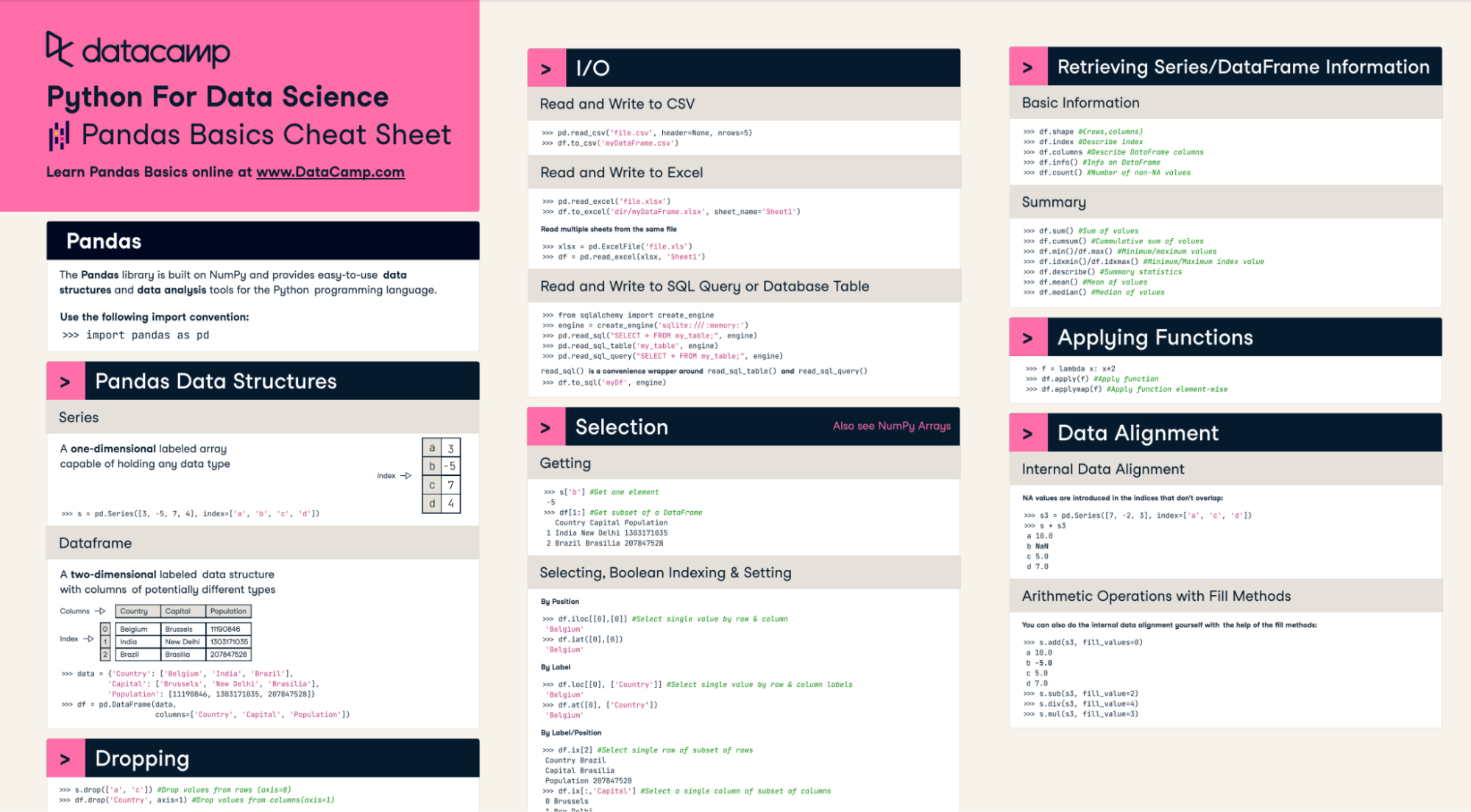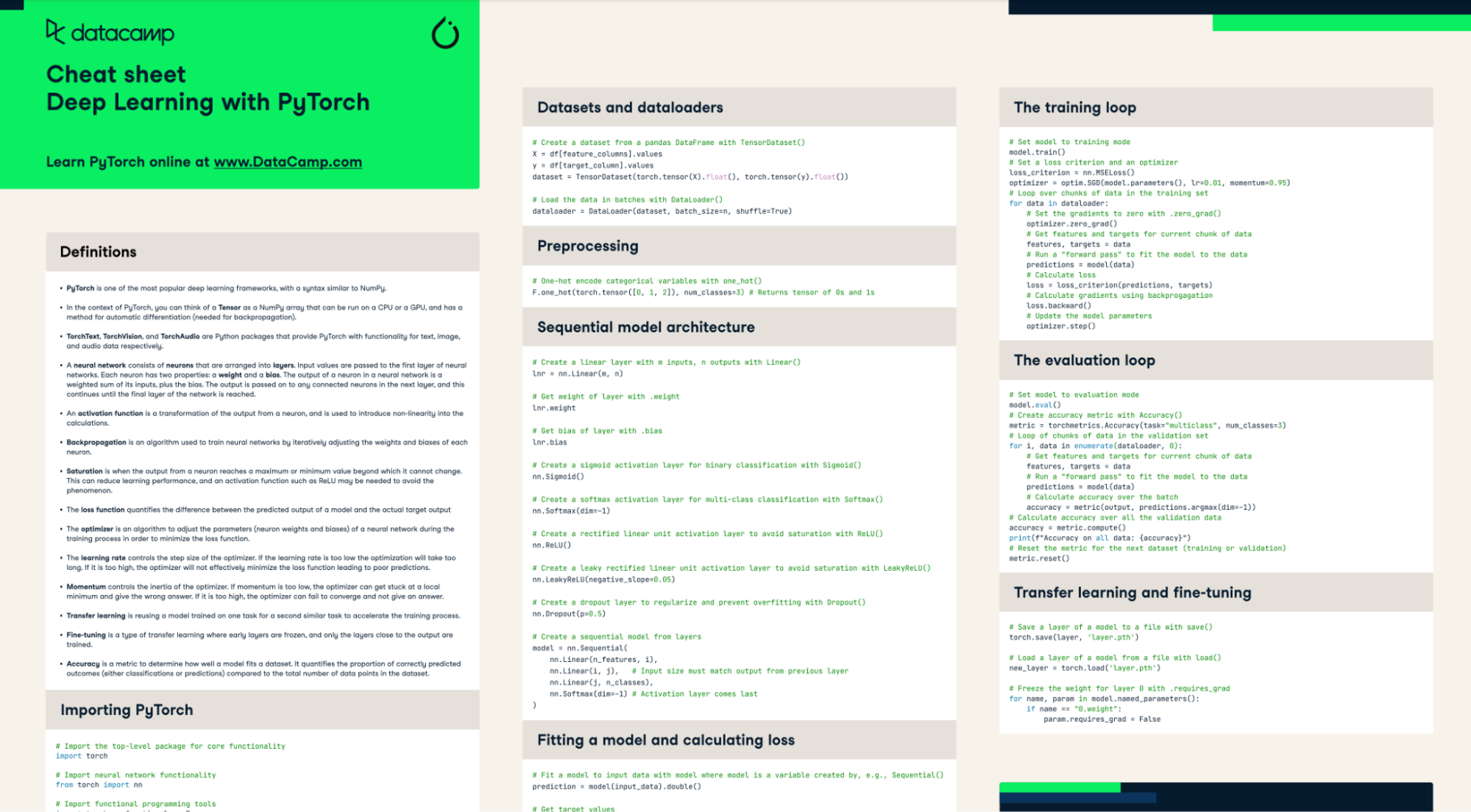Track
The landscape of data science is growing rapidly, and many tools are available to help data scientists with their work. In this post, we’ll discuss the top 10 data science tools you can use in 2025. These tools will assist you in ingesting, cleaning, processing, analyzing, visualizing, and modeling data. Additionally, some tools also offer machine learning ecosystems for model tracking, development, deployment, and monitoring.
The Role of Data Science Tools
Data science tools are essential in helping data scientists and analysts extract valuable insights from data. These tools are useful for data cleaning, manipulation, visualization, and modeling.
With the advent of ChatGPT, more and more tools are getting integrated with GPT-3.5 and GPT-4 models. The integration of AI-supported tools makes it even easier for data scientists to analyze data and build models.
For example, generative AI capabilities (PandasAI) have made their way to simpler tools like pandas, allowing users to get results by writing prompts in natural language. However, these new tools are not yet widely used among data professionals.
Moreover, data science tools are not limited to performing only one function. They provide additional capabilities to perform advanced tasks and, in some cases, offer data science to the ecosystem. For instance, MLFlow is primarily used for model tracking. However, it can also be used for model registry, deployment, and inference.
Criteria for Selecting Data Science Tools
The list of top 10 tools is based on the following key features:
- Popularity and adoption: Tools with large user bases and community support have more resources and documentation. Popular open-source tools benefit from continuous improvements.
- Ease of use: Intuitive workflows without extensive coding allow for faster prototyping and analysis.
- Scalability: The ability to handle large and complex datasets.
- End-to-end capabilities: Tools that support diverse tasks like data preparation, visualization, modeling, deployment, and inference.
- Data connectivity: Flexibility to connect to diverse data sources and formats like SQL, NoSQL databases, APIs, unstructured data, etc.
- Interoperability: Integrating seamlessly with other tools.
Comprehensive Review of Top Data Science Tools for 2025
In this review, we will explore new and established tools that have become essential for data scientists in the workplace. These tools share several common features - they are easily accessible, user-friendly, and offer robust capabilities for data analysis and machine learning.
Python-Based Tools for Data Science
Python is widely used for data analysis, processing, and machine learning. Its simplicity and large developer community make it a popular choice.
1. pandas
pandas makes data cleaning, manipulation, analysis, and feature engineering seamless in Python. It is the most used library by data professionals for all kinds of tasks. You can now use it for data visualization, too.

Our pandas cheat sheet can help you master this data science tool.
2. Seaborn
Seaborn is a powerful data visualization library that is built on top of Matplotlib. It comes with a range of beautiful and well-designed default themes and is particularly useful when working with pandas DataFrames. With Seaborn, you can create clear and expressive visualizations quickly and easily.
3. Scikit-learn
Scikit-learn is the go-to Python library for machine learning. This library provides a consistent interface to common algorithms, including regression, classification, clustering, and dimensionality reduction. It's optimized for performance and widely used by data scientists.
Open-Source Data Science Tools
Open-source projects have been instrumental in advancing the field of data science. They provide a wealth of tools and resources that can help data scientists work more efficiently and effectively.
4. Jupyter Notebooks
Jupyter Notebooks is a popular open-source web application that allows data scientists to create shareable documents combining live code, visualizations, equations, and text explanations. Great for exploratory analysis, collaboration, and reporting.
5. Pytorch
Pytorch is a highly flexible and open-source machine learning framework that is widely used for developing neural network models. It offers modularity and a huge ecosystem of tools for handling various types of data, such as text, audio, vision, and tabular data. With GPU and TPU support, you can accelerate your model training by 10X.

Master Pytorch with our handy cheat sheet
6. MLFlow
MLFlow is an open-source platform from Databricks for managing the end-to-end machine learning lifecycle. It tracks experiments, package models, and deploy to production while maintaining reproducibility. It is also compatible with tracking LLMs and supports both command line interface and graphical user interface. It also provides API for Python, Java, R, and Rest.
7. Hugging Face
The Hugging Face has become a one-stop solution for open-source machine learning development. It provides easy access to datasets, state-of-the-art models, and inference, making it convenient to train, evaluate, and deploy your models using various tools in the Hugging Face ecosystem. Additionally, it provides access to high-end GPUs and enterprise solutions. Whether you are a machine learning student, researcher, or professional, this is the only platform you need to develop top-notch solutions for your projects.
Proprietary Data Science Tools
Robust proprietary platforms offer enterprise-scale capabilities, one-click setup, and ease of use. They also provide support and security for your data.
8. Tableau
Tableau is a leader in business intelligence software. It enables intuitive interactive data visualizations and dashboards that unlock insights from data at scale. With Tableau, users can connect to a wide variety of data sources, clean and prepare the data for analysis, and then generate rich visualizations like charts, graphs, and maps. The software is designed for ease of use, allowing non-technical users to create reports and dashboards with drag-and-drop simplicity.
9. RapidMiner
RapidMiner is an end-to-end advanced analytics platform for building machine learning and data pipelines that offers a visual workflow designer to streamline the process. From data preparation to model deployment, RapidMiner provides all the necessary tools to manage every step of the ML workflow. The visual workflow designer at the core of RapidMiner enables users to create pipelines with ease, without the need to write code.
AI Tools
In the last year, AI tools have become essential for data analysis. They are used for code generation, validation, result comprehension, report generation, and more.
10. ChatGPT
ChatGPT is an AI-powered tool that can assist you with various data science tasks. It offers the ability to generate Python code and execute it, and it can also generate complete analysis reports. But that's not all. ChatGPT comes equipped with a variety of plugins that can be highly useful for research, experimentation, math, statistics, automation, and document review. Some of the most notable features include DALLE-3 (Image generation), Browser with Bing, and ChatGPT Vision (Image recognition).
You can refer to a Guide to Using ChatGPT for Data Science Projects to learn how to use ChatGPT and build end-to-end data science projects.
Hands-On Projects and Resources
Looking for ways to apply these data tools to real-life datasets? DataCamp has got you covered. They offer both guided and unguided projects that can be loaded on an AI-powered notebook called DataLab, allowing you to start working on a project right away. DataCamp's project list is extensive and covers a range of topics, including data processing, machine learning, data engineering, MLOps, LLMs, NLP, and more.
Here are the links to more projects that will help you apply cutting-edge tools to your dataset:
- 7 Exciting AI Projects for Beginner, Intermediate, and Advanced Learners
- 5 Projects Build with Generative Models and Open Source Tools
- 60+ Python Projects for All Levels of Expertise
- 6 Tableau Projects to Help Develop Your Skills
- 10 Portfolio-Ready SQL Projects for All Levels
- 20 Data Analytics Projects for All Levels
- 25 Machine Learning Projects for All Levels
Conclusion
Exciting developments are happening in the dynamic realm of data science, where innovation is the norm. This blog post provided a comprehensive overview of the top 10 data science tools that are gaining popularity and will likely see increased adoption in 2025.
Python-based libraries like Pandas, Seaborn, and Scikit-learn provide robust capabilities for data preparation, analysis, visualization, and modeling. Open source platforms like MLflow, Pytorch and Hugging Face accelerate experimentation, development, and deployment. Proprietary solutions like Tableau and RapidMiner enable enterprise-scale business intelligence and end-to-end machine learning lifecycle management. And new AI assistants like ChatGPT generate code and insights, boosting productivity.
If you aspire to become a proficient data scientist and acquire expertise in using these tools, then enroll yourself in a Data Scientist with Python career track. This program will equip you with the essential skills required to excel as a data scientist, starting from data manipulation to machine learning.

As a certified data scientist, I am passionate about leveraging cutting-edge technology to create innovative machine learning applications. With a strong background in speech recognition, data analysis and reporting, MLOps, conversational AI, and NLP, I have honed my skills in developing intelligent systems that can make a real impact. In addition to my technical expertise, I am also a skilled communicator with a talent for distilling complex concepts into clear and concise language. As a result, I have become a sought-after blogger on data science, sharing my insights and experiences with a growing community of fellow data professionals. Currently, I am focusing on content creation and editing, working with large language models to develop powerful and engaging content that can help businesses and individuals alike make the most of their data.

